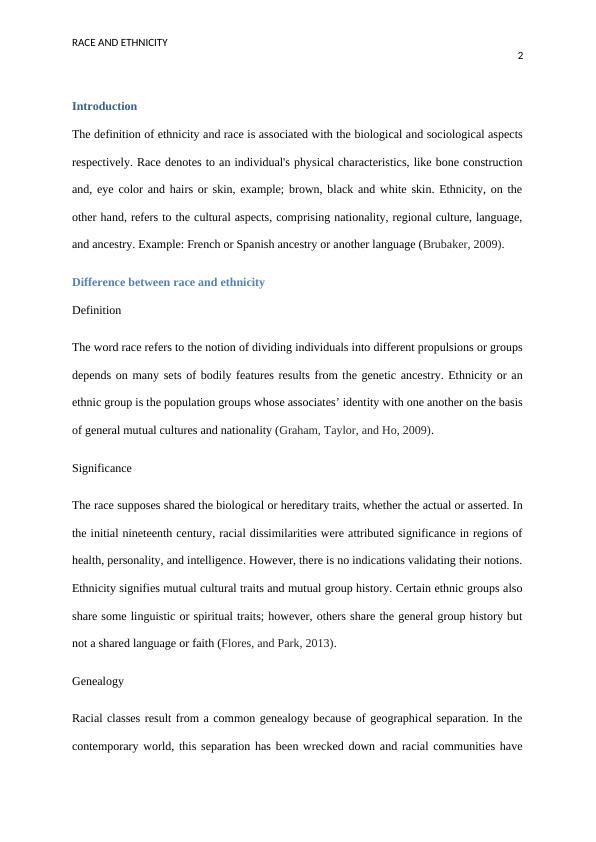Race and Ethnicity
13 Pages3193 Words75 Views
Added on 2023-04-21
About This Document
This document discusses the differences between race and ethnicity, the concept of race as a biological and social construct, inequalities among ethnic groups, and sociological explanations of race and ethnicity. It explores the definitions, significance, genealogy, distinguishing factors, nationalism, legal system, conflicts, and more. The document also highlights the deep-seated racial disparities in the UK and the sociological explanations for these disparities.
Race and Ethnicity
Added on 2023-04-21
ShareRelated Documents
End of preview
Want to access all the pages? Upload your documents or become a member.
Managing Diversity
|4
|548
|79
Concept of Race and Ethnicity | Essay
|3
|404
|19
Sociology Assignment | Racism and Discrimination
|21
|5430
|75
Race and Ethnicity
|9
|2762
|332
The Concept of Racialization
|7
|1795
|256




